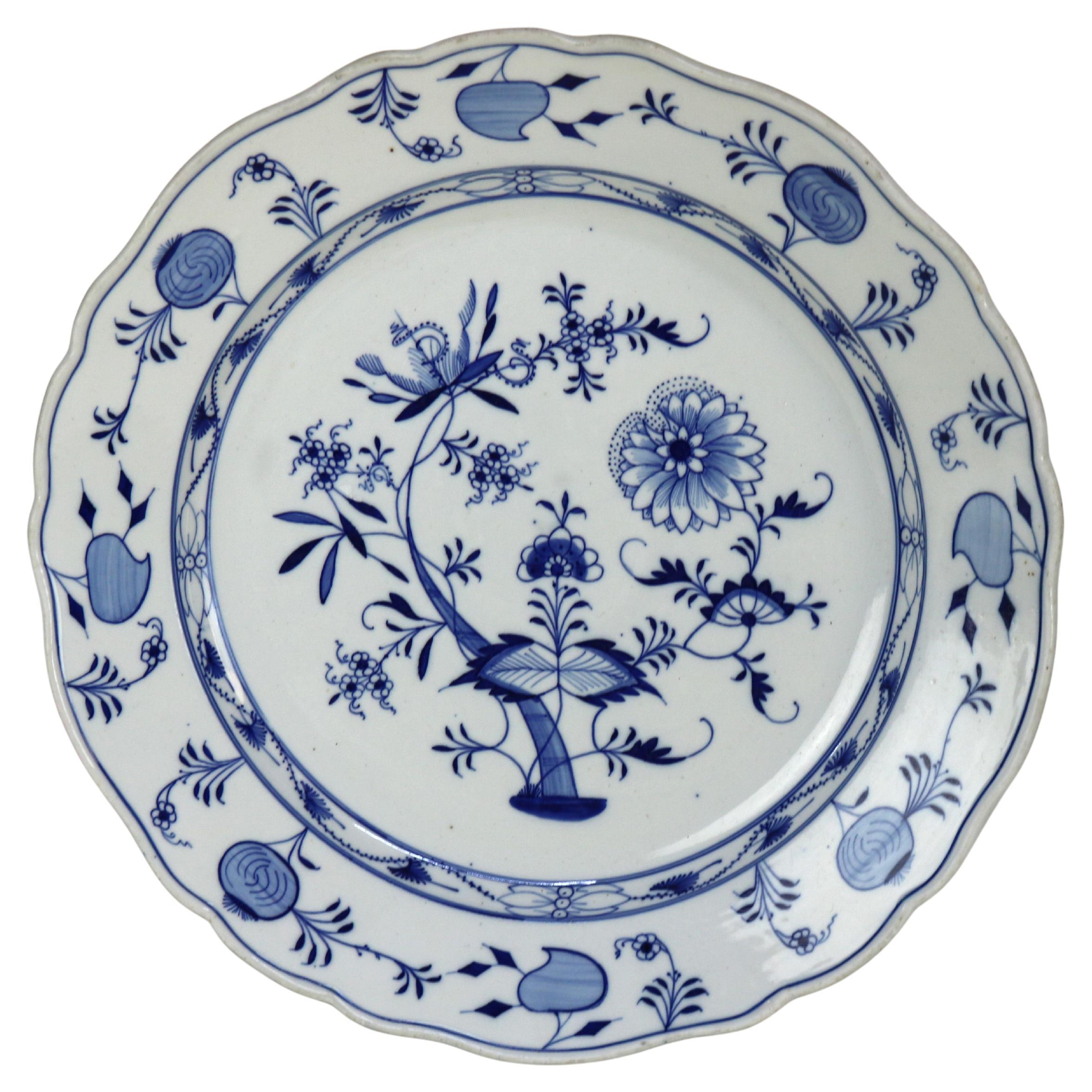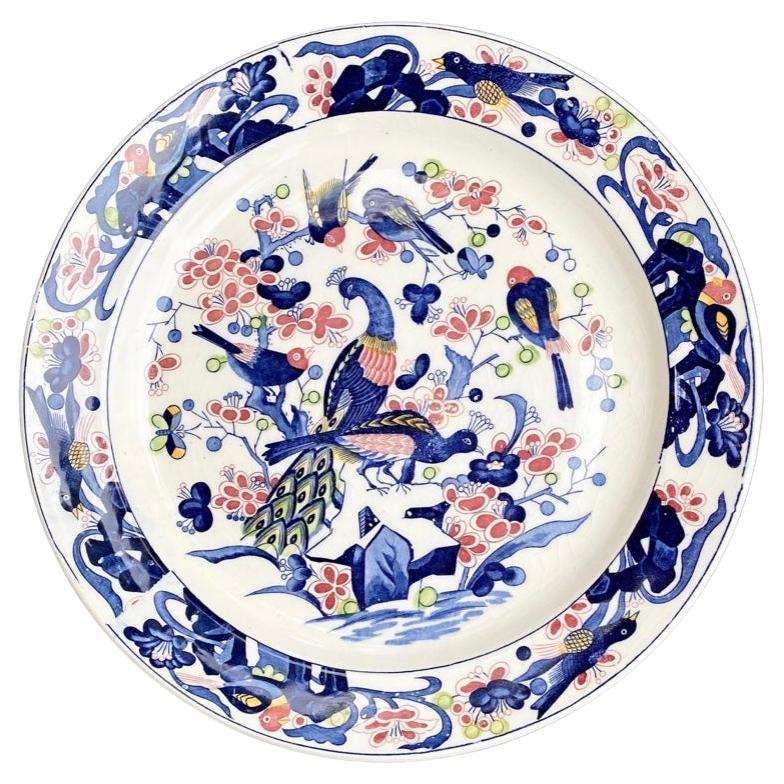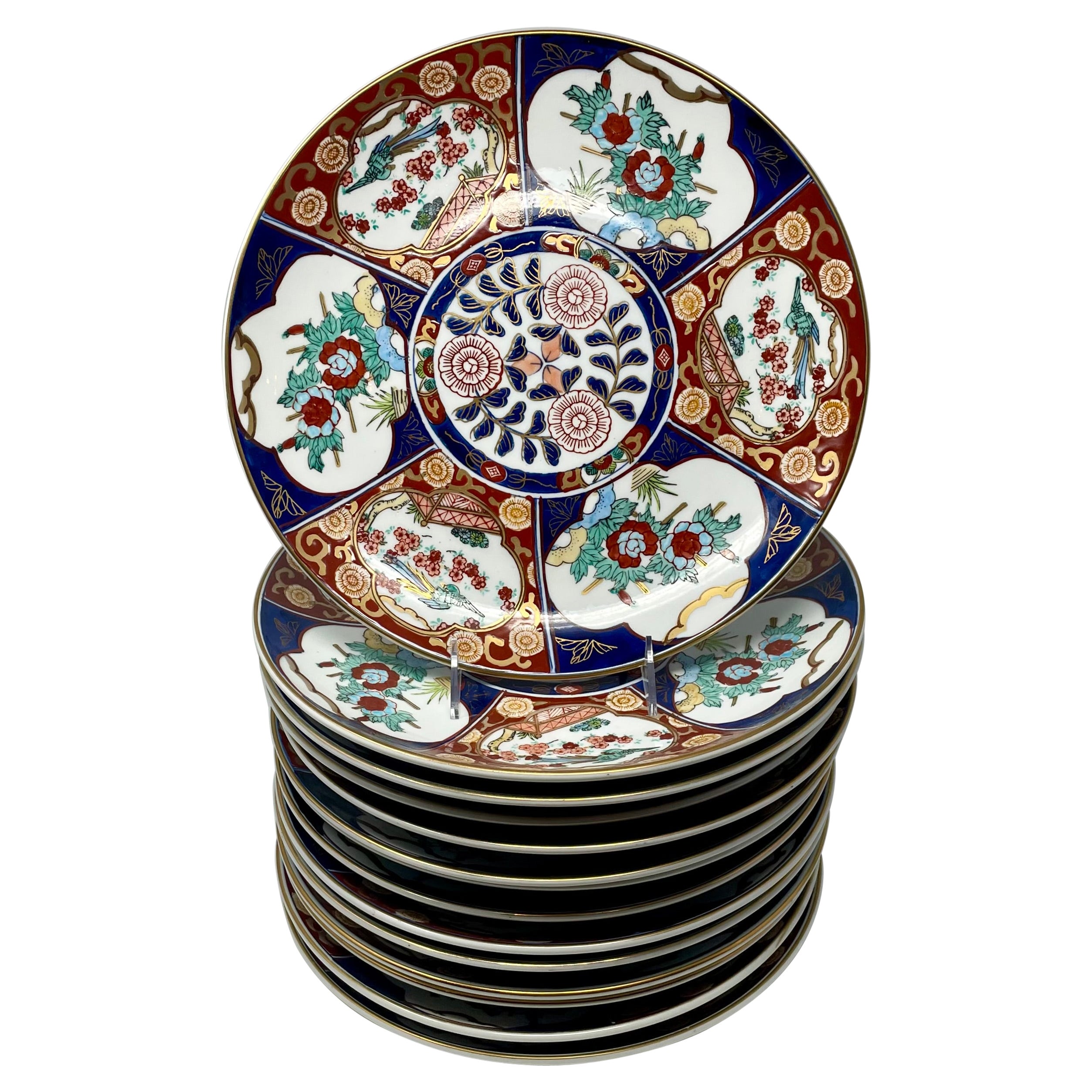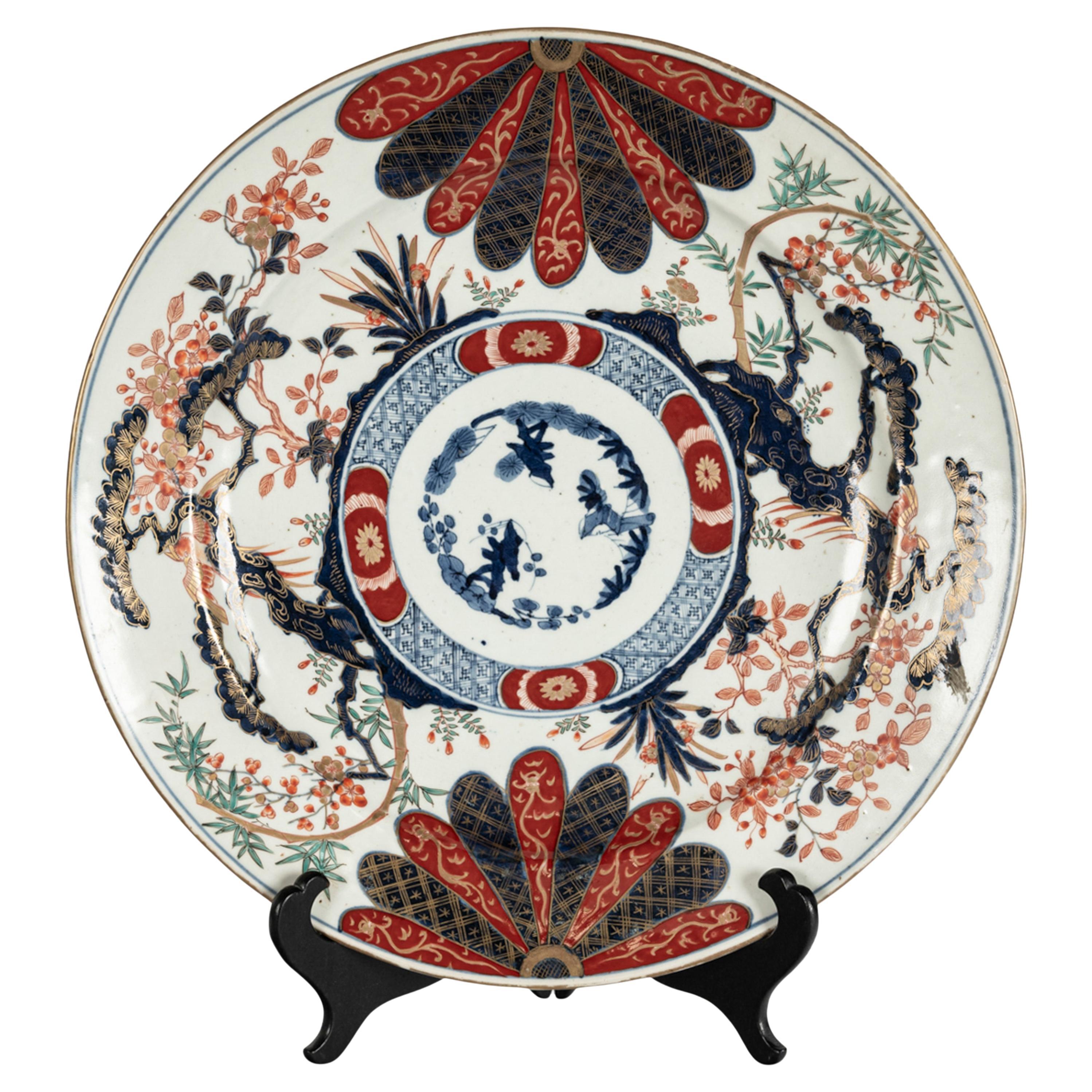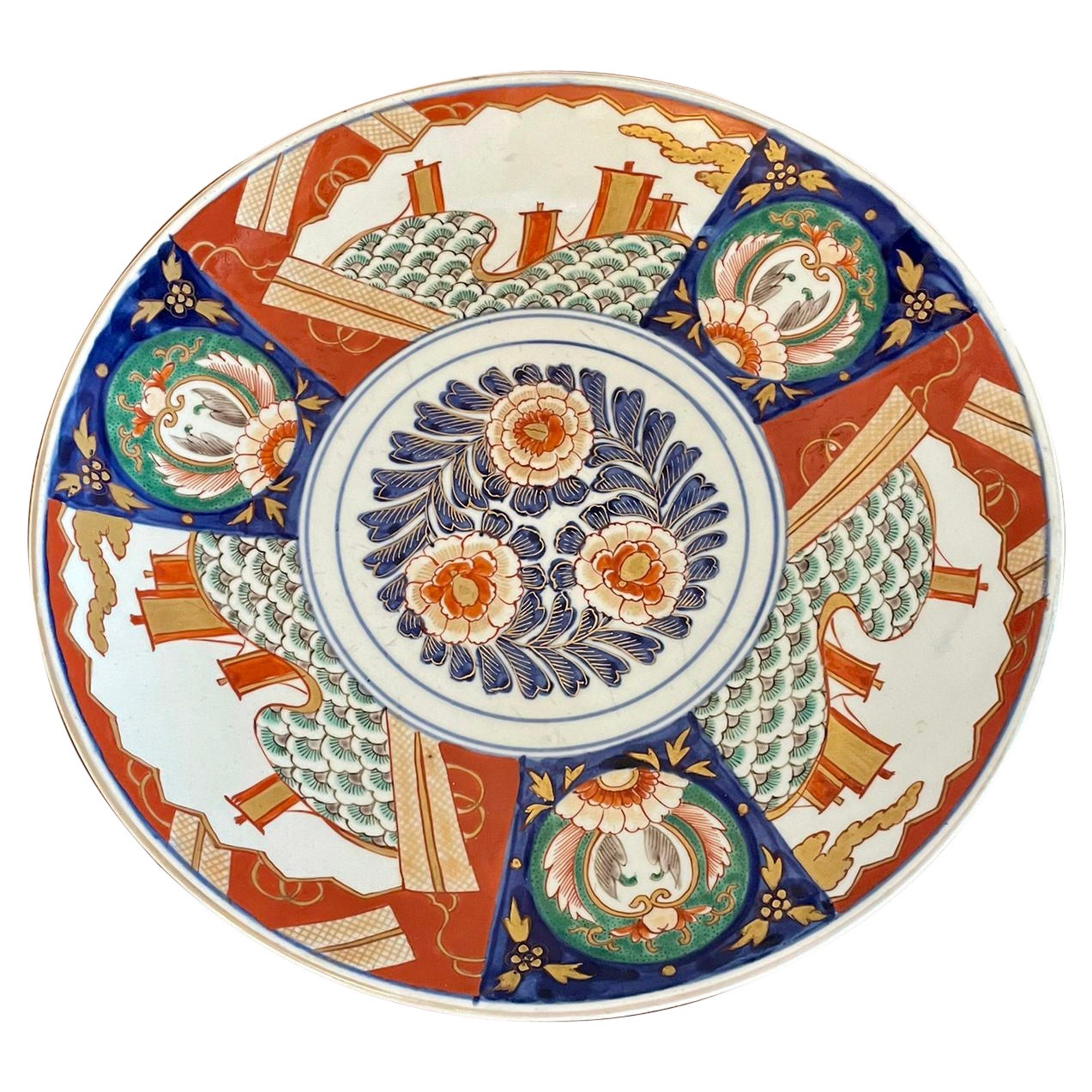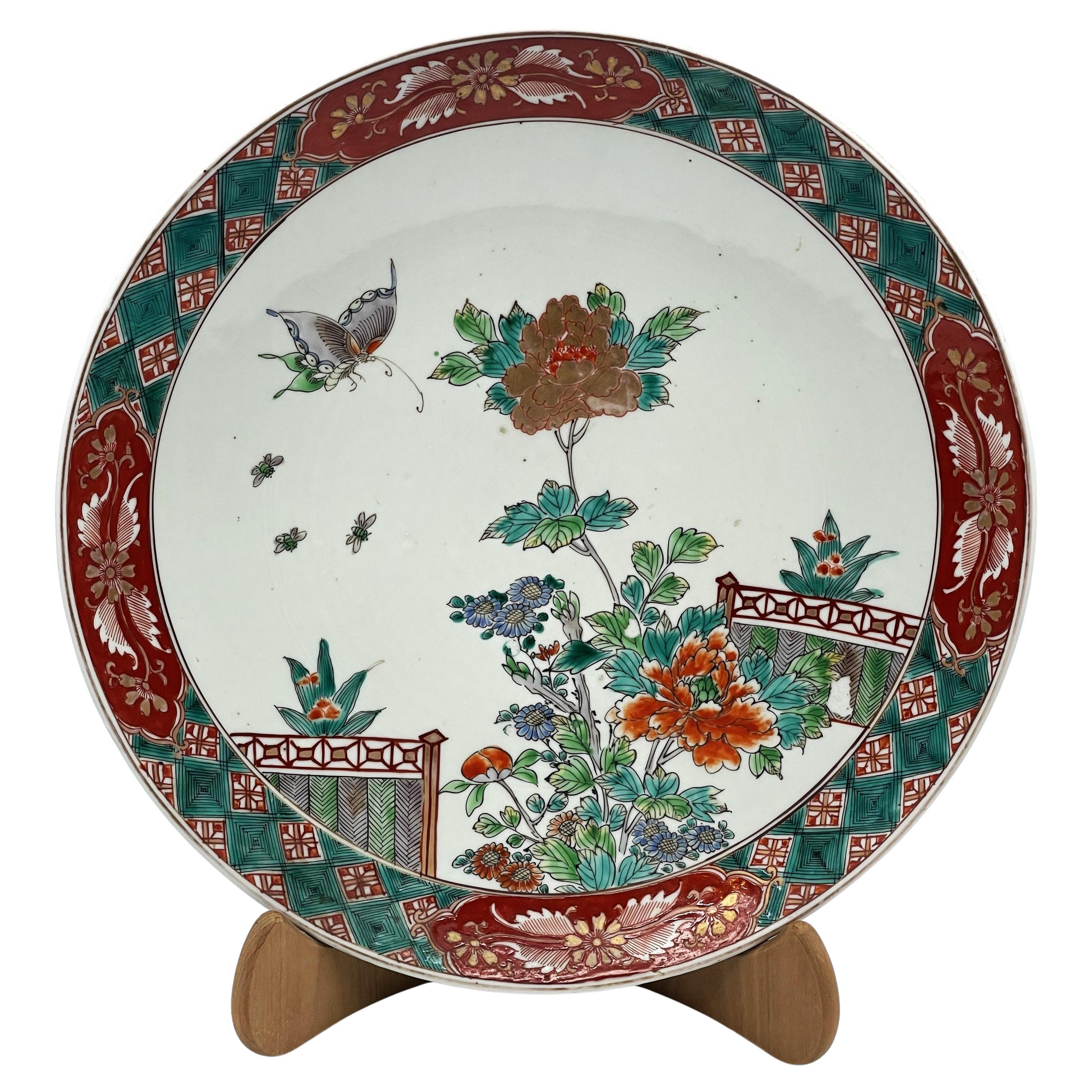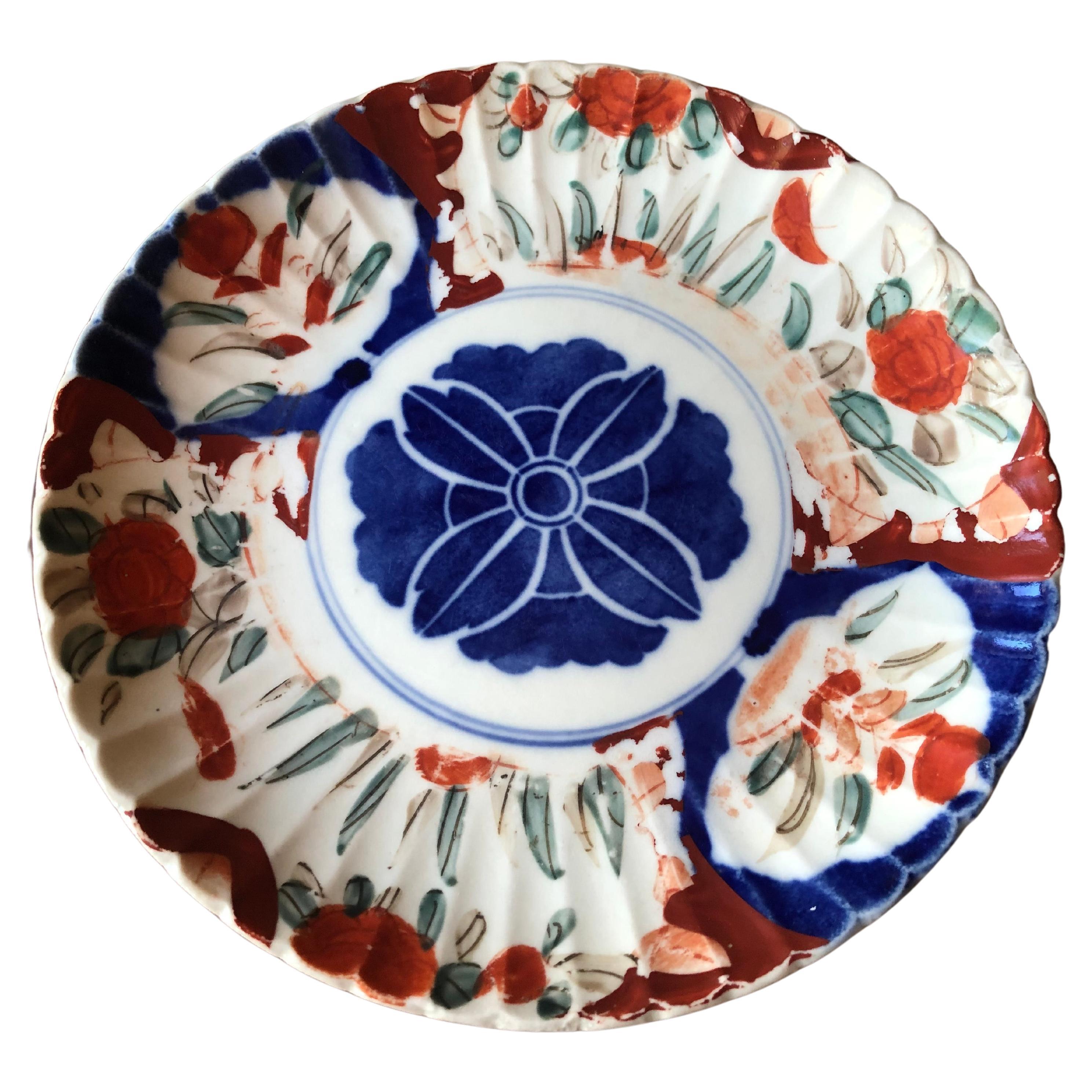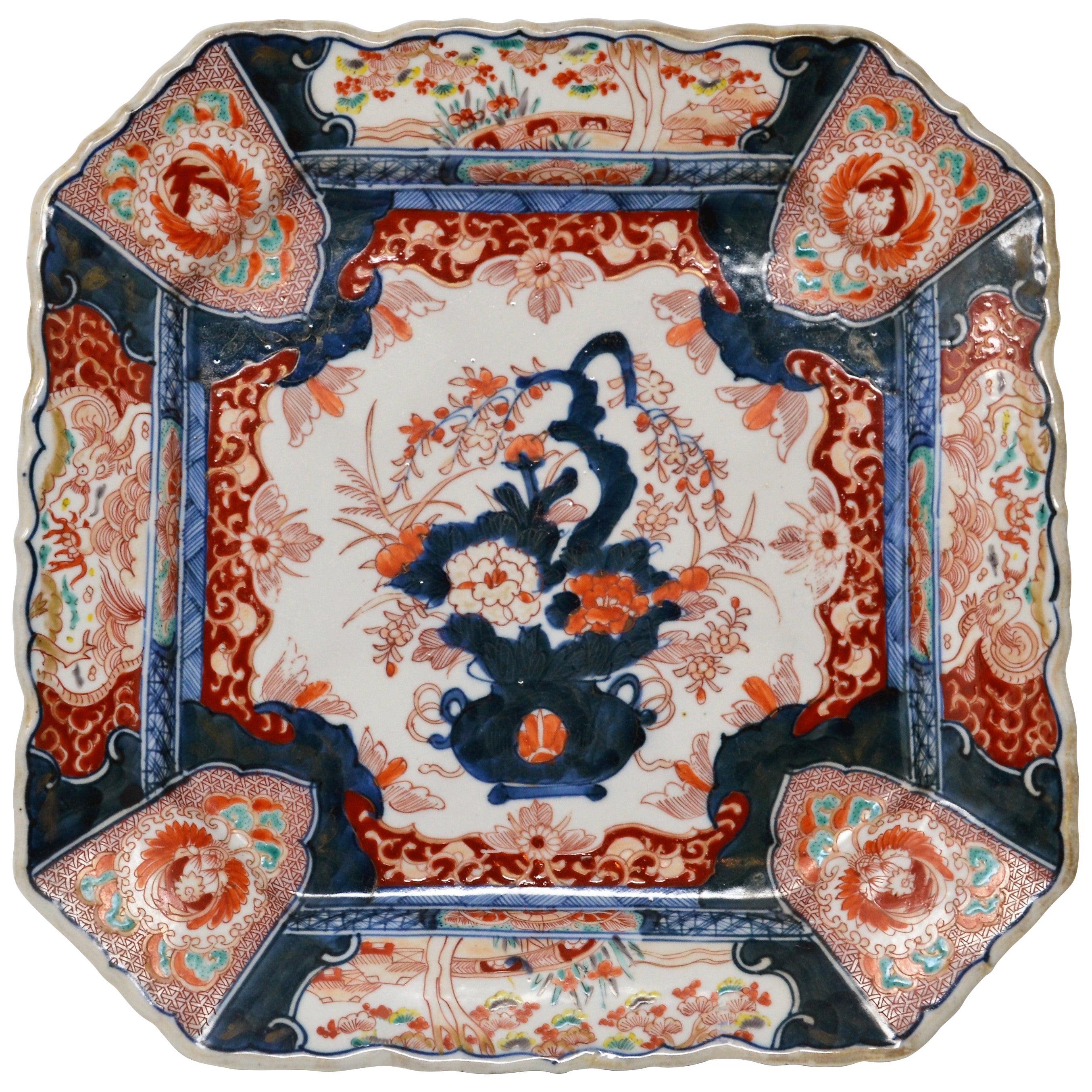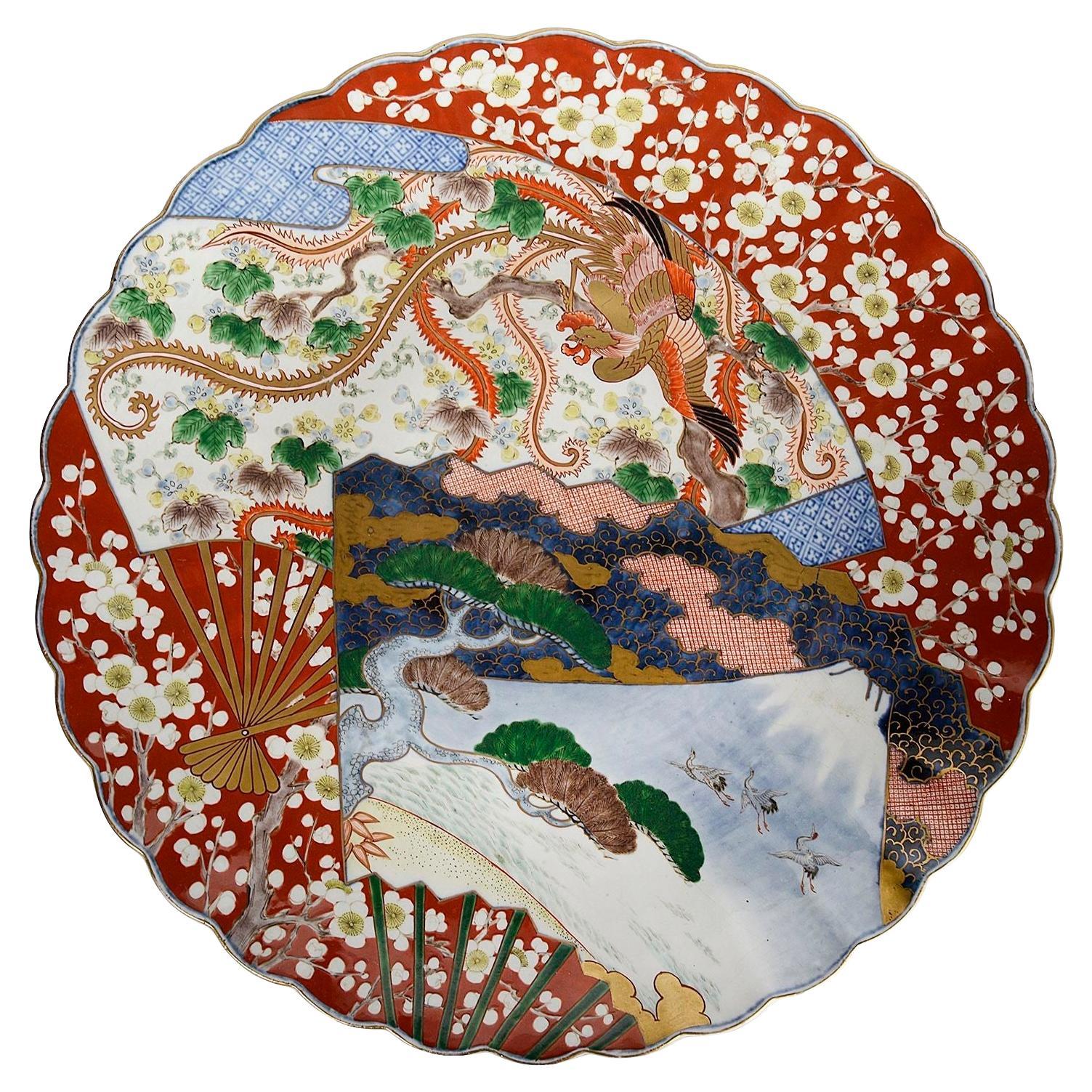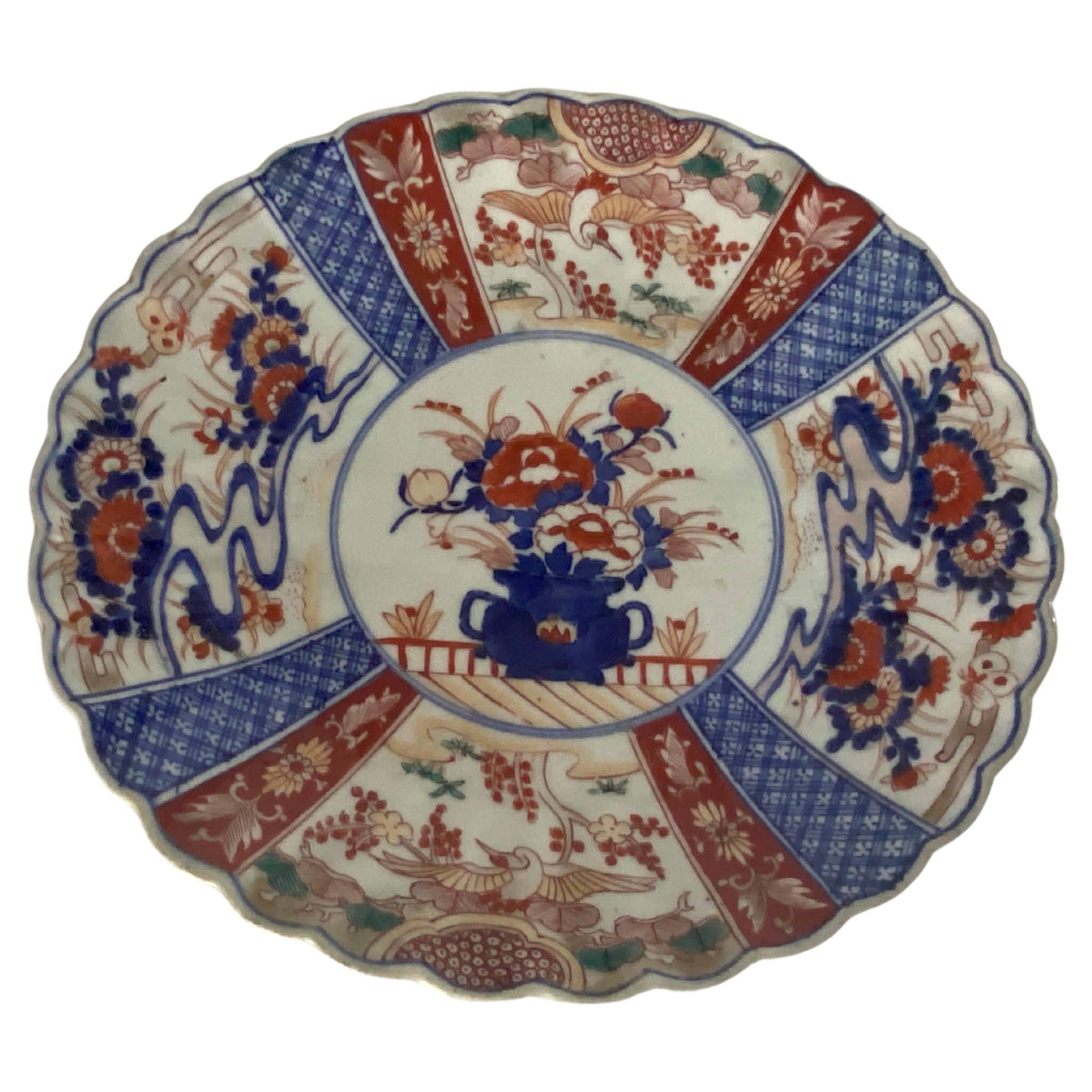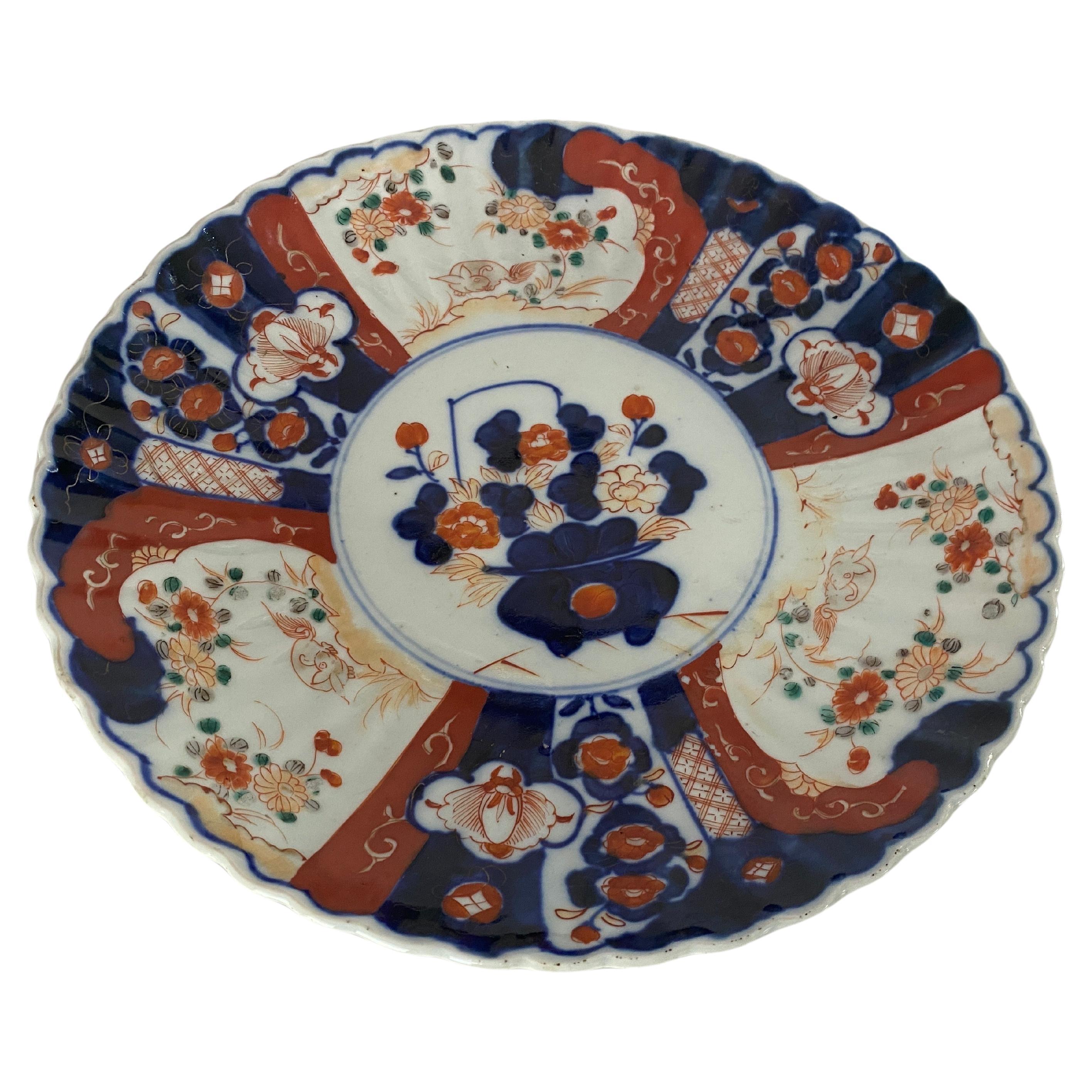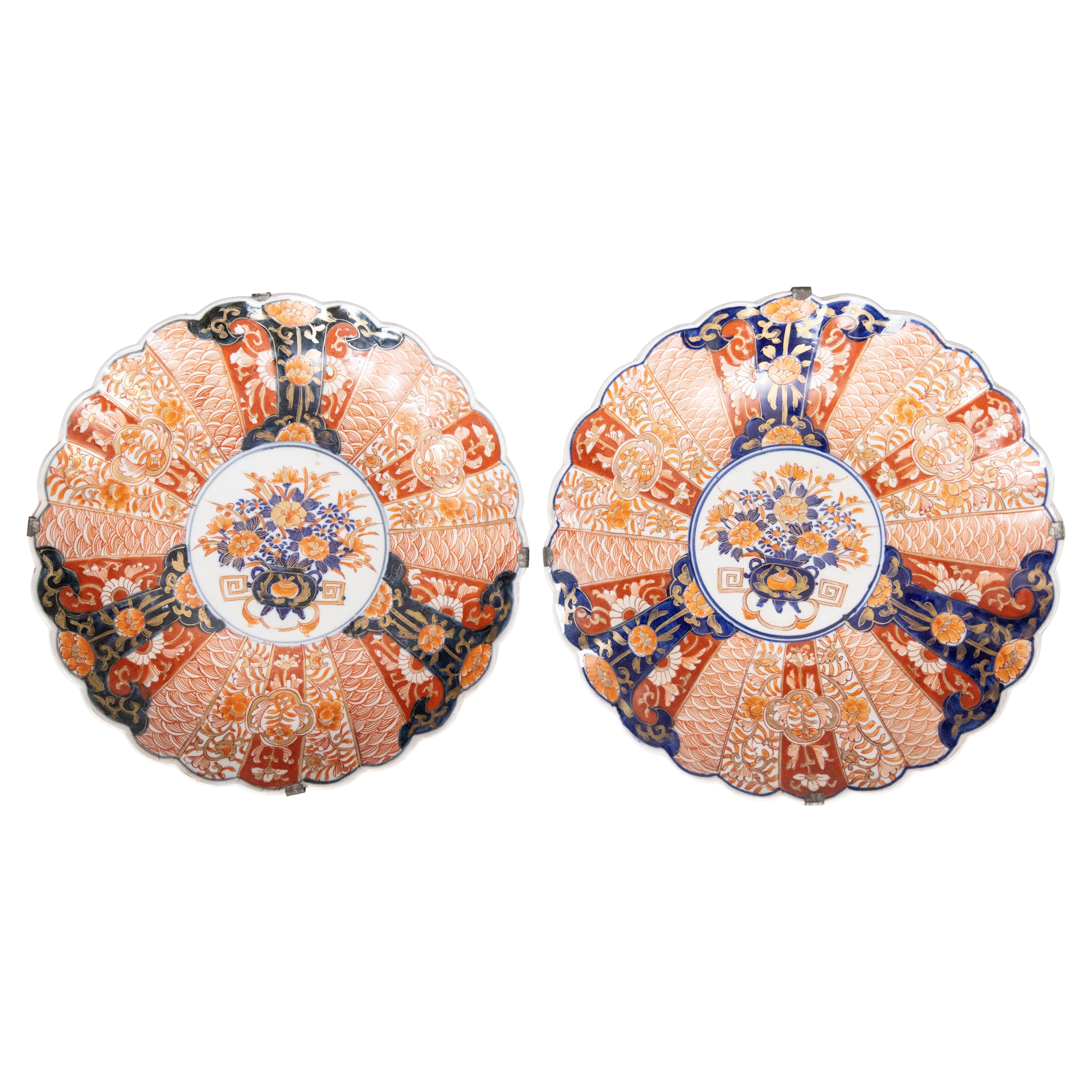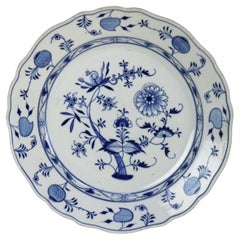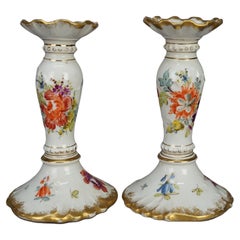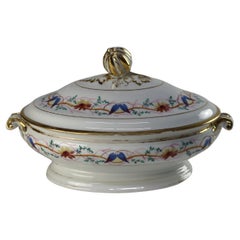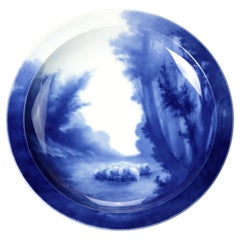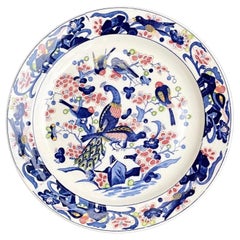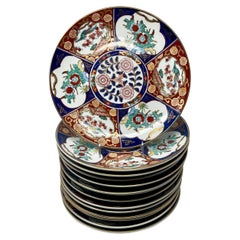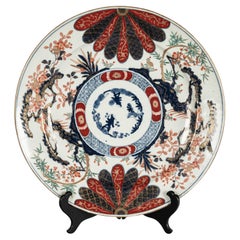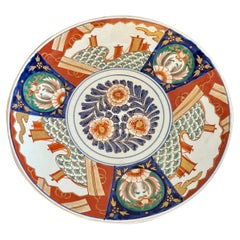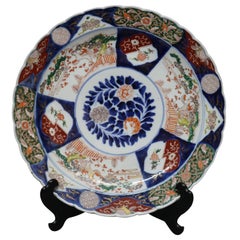
Antique Japanese Imari Hand Enameled Porcelain Charger, Garden Motif, c1900
View Similar Items
Want more images or videos?
Request additional images or videos from the seller
1 of 6
Antique Japanese Imari Hand Enameled Porcelain Charger, Garden Motif, c1900
About the Item
- Dimensions:Height: 2 in (5.08 cm)Diameter: 18.25 in (46.36 cm)
- Materials and Techniques:
- Place of Origin:
- Period:
- Date of Manufacture:1900
- Condition:Wear consistent with age and use. Overall good condition with minor paint loss and edge flea bites as photographed.
- Seller Location:Big Flats, NY
- Reference Number:Seller: 697521stDibs: LU2396318589122
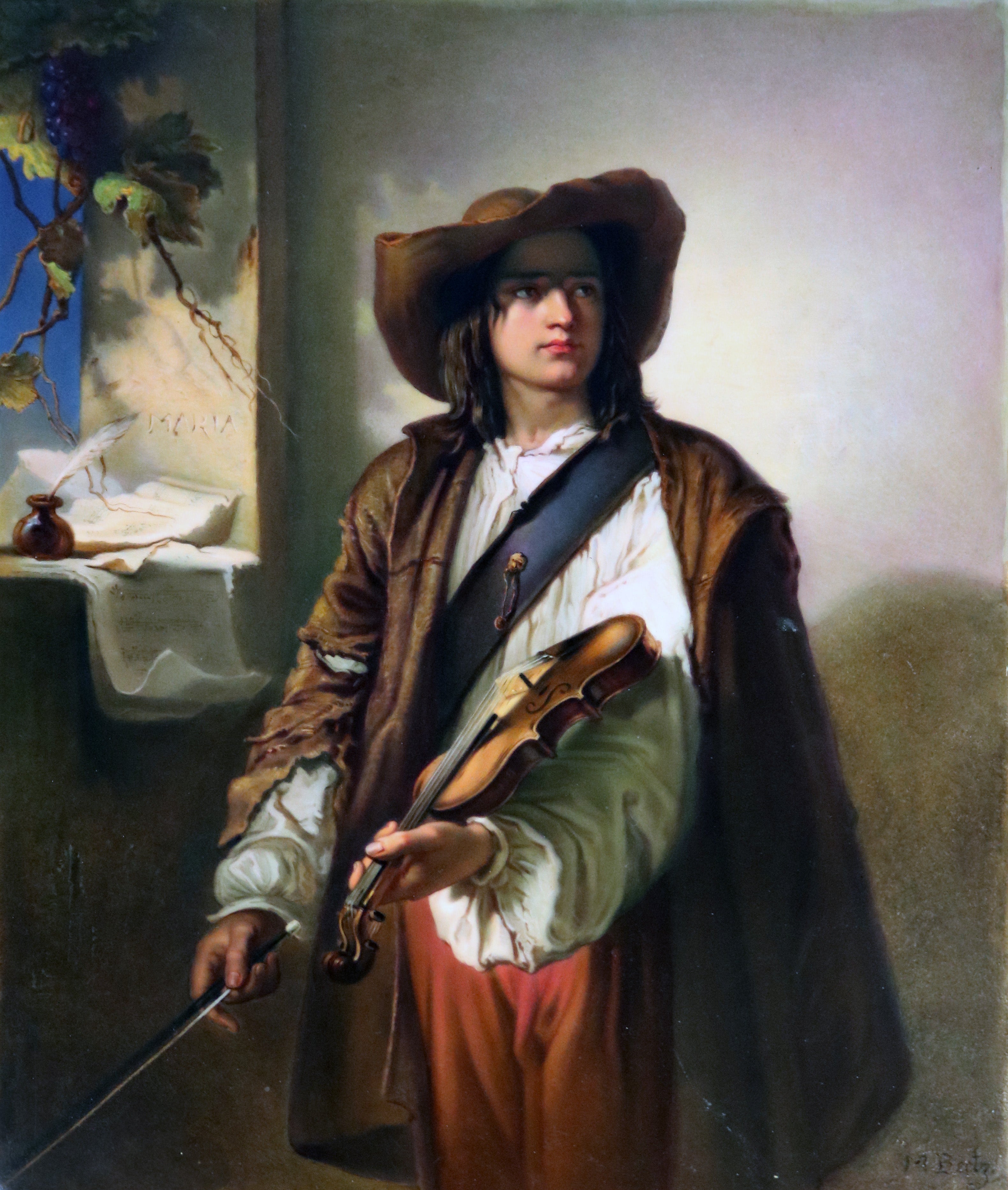
About the Seller
4.8
Gold Seller
Premium sellers maintaining a 4.3+ rating and 24-hour response times
1stDibs seller since 2016
2,688 sales on 1stDibs
Typical response time: 9 hours
Authenticity Guarantee
In the unlikely event there’s an issue with an item’s authenticity, contact us within 1 year for a full refund. DetailsMoney-Back Guarantee
If your item is not as described, is damaged in transit, or does not arrive, contact us within 7 days for a full refund. Details24-Hour Cancellation
You have a 24-hour grace period in which to reconsider your purchase, with no questions asked.Vetted Professional Sellers
Our world-class sellers must adhere to strict standards for service and quality, maintaining the integrity of our listings.Price-Match Guarantee
If you find that a seller listed the same item for a lower price elsewhere, we’ll match it.Trusted Global Delivery
Our best-in-class carrier network provides specialized shipping options worldwide, including custom delivery.More From This Seller
View AllAntique Meissen Porcelain Charger with Onion Pattern C1900
By Meissen Porcelain
Located in Big Flats, NY
Antique Meissen Porcelain Charger with Onion Pattern C1900
Measures- 14.5"H x 14.5"W x 2.25"D
Category
Early 20th Century Porcelain
Materials
Porcelain
$520 Sale Price
20% Off
Antique German Hand Painted & Gilt Floral Porcelain Candlesticks, Berlin C1900
Located in Big Flats, NY
An antique German pair of candlesticks offer porcelain construction with hand painted floral decoration and gilt highlights throughout, Berlin stamped on bases as photographed, c1900...
Category
Early 20th Century German Candlesticks
Materials
Porcelain, Paint
$280 Sale Price / set
20% Off
Antique French Limoges Hand Painted Foliate & Gilt Porcelain Terrine C1900
By Limoges
Located in Big Flats, NY
Antique French Limoges Hand Painted Foliate & Gilt Porcelain Terrine C1900
Measures- 7"H x 12"W x 7.5"D
Category
Early 20th Century Porcelain
Materials
Porcelain, Paint
$300 Sale Price
20% Off
Antique Limoges Hand Painted Scenic Porcelain Charger by D&C, circa 1900
Located in Big Flats, NY
Antique French Limoges charger by D&C offer porcelain construction with landscape scene, maker mark en verso as photographed, circa 1900.
Measures - 1.75"H x 15.5"diam.
Category
Early 20th Century French Platters and Serveware
Materials
Porcelain
$600 Sale Price
20% Off
Five Antique Meissen Porcelain Plates with Hand Painted Flowers & Gilt C1900
Located in Big Flats, NY
Five Antique Meissen Porcelain Plates with Hand Painted Garden Flowers & Gilt Highlights, en Verso Maker Mark, C1900
Measures - 1.5"h x 9.75"diam
Category
Early 20th Century European Porcelain
Materials
Porcelain
$440 Sale Price / set
20% Off
Antique Royal Worcester Hand Painted, Gilt Egyptian Revival Porcelain Ewer c1900
By Royal Worcester
Located in Big Flats, NY
An antique English Royal Worcester Egyptian Revival lidded and footed ewer offers porcelain construction with exaggerated neck, hand painted garden flowers & butterflies, and heavily...
Category
Early 20th Century English Egyptian Revival Porcelain
Materials
Porcelain
$960 Sale Price
20% Off
You May Also Like
Antique Japanese Imari Style Charger
Located in New Orleans, LA
Antique Imari style hand-painted cabinet plate with with cobalt blue peacocks and pink cherry blossoms. Plate is in near perfect condition and date back to the early 1900's. Cobalt b...
Category
Early 20th Century Japanese Anglo-Japanese Porcelain
Materials
Porcelain
$150 Sale Price
40% Off
Set of 14 Antique Japanese Imari Chargers, circa 1900
Located in New Orleans, LA
Set of 14 Early 20th century handpainted Japanese Gold Imari chargers.
Category
Early 20th Century Japanese Porcelain
Materials
Porcelain
Monumental Antique Japanese Meiji Period Imari Porcelain Charger Plate 1880
Located in Portland, OR
A fine & monumetal Japanese Meiji period Porcelain charger/plate, circa 1890.
The charger is very finely decorated with underglaze blue, red iron oxide glazes and heightened with gil...
Category
Antique 1880s Japanese Meiji Porcelain
Materials
Porcelain
Large Antique Japanese Quality Imari Charger
Located in Suffolk, GB
Large antique Japanese quality Imari charger having quality hand painted panels with flowers, leaves, trees, birds and ships in wonderful green, blue, red, white and gold colours
...
Category
Antique Early 1900s Japanese Porcelain
Materials
Porcelain
Japanese Meiji Period Imari Porcelain Charger with Flowers and Bees, ca. 1900
Located in New York, NY
Japanese Meiji Period Imari Porcelain Charger with Flower and Bees, ca. 1900
DIMENSIONS:
Diameter: 16 inches
DETAILS
Meiji Period: 1868-1912
ABOUT IMARI PORCELAIN
Japanese Imari porcelain refers to a type of porcelain ware that was produced in the town of Arita, in Saga Prefecture on Japan’s Kyushu island, and exported primarily from the nearby port of Imari—hence the name.
Origins & History:
• Early 17th century (Edo period): Porcelain production began in Arita after Korean potters, brought to Japan during the Japanese invasions of Korea (1592–1598), discovered kaolin (porcelain clay) in the area.
• Mid-17th century to 18th century: Imari ware became a major export to Europe via the Dutch East India Company.
• Declined in export after 1750s as Chinese porcelain re-entered European markets.
Characteristics:
• Base: Made from fine white porcelain.
• Decoration: Richly colored and ornate, featuring:
o Underglaze blue painting (Arita blue-and-white style).
o Overglaze enamels, especially in red, gold, green, and blue (the classic “Kinrande” Imari style).
• Designs: Often feature floral motifs, birds, mythical creatures, and geometric patterns in bold symmetrical compositions.
Types of Imari:
1. Early Imari / Shoki...
Category
Antique Late 19th Century Japanese Japonisme Porcelain
Materials
Porcelain
Antique Japanese Imari Porcelain Plate
Located in New York, NY
Wonderful 18th to 19th century antique Imari porcelain plate with scalloped rim. Hand painted with central blue medallion, surrounded vibrant orange, crimson, blue, and green pattern...
Category
Antique 19th Century Japanese Japonisme Porcelain
Materials
Porcelain
